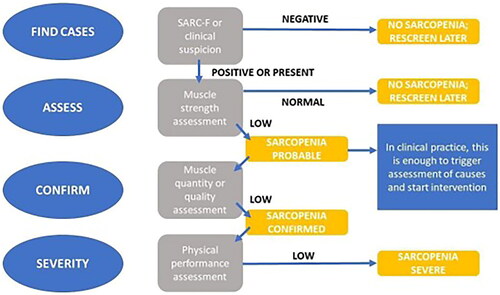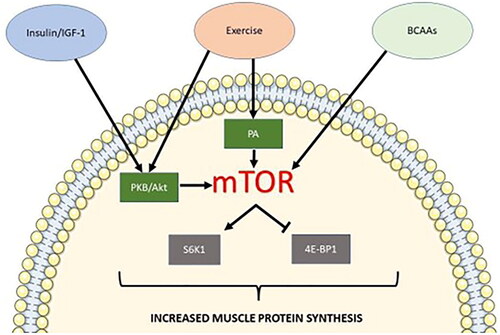Figures & data
Figure 1. EWGSOP algorithm for case-finding, making a diagnosis and quantifying severity in clinical practice. Image adapted from Cruz-Jentoft et al.Citation13

Table 1. SARC-F Questionnaire used to begin the EWGSOP diagnostic protocol for patients with suspected sarcopenia.
Table 2. Summary table of the anatomical, cellular, and molecular changes observed in aging and sarcopenia.
Figure 2. Simplified mTOR1 pathway for muscle protein synthesis. Anabolic stimuli including insulin/IGF-1, exercise (mechanical stimulation), and BCAAs can induce the mTOR1 pathway for protein synthesis. Insulin/IGF-1 and exercise allow the phosphorylation of PKB/Akt. PKB/Akt phosphorylation stimulates mTORC1 activity via the phosphorylation of TSC2 and PRAS40, both negative regulators of mTOR activity. Exercise also induces mTOR1 activation via the binding of phosphatidic acid (PA) to mTOR1. Sensing of BCAA presence in the muscle cell leads to mTOR1 lysosomal translocation leading to its subsequent activation. Activated mTOR1 phosphorylates translation repressor 4E-BP1. mTOR1 also phosphorylates S6K1, which stimulates a second phosphorylation event by PDPK1 activating S6K1. Active S6K1 can, in turn, stimulate the initiation of protein synthesis.

Table 3. Summary table of the current barriers and future possibilities for exercise intervention to reverse muscle aging.
